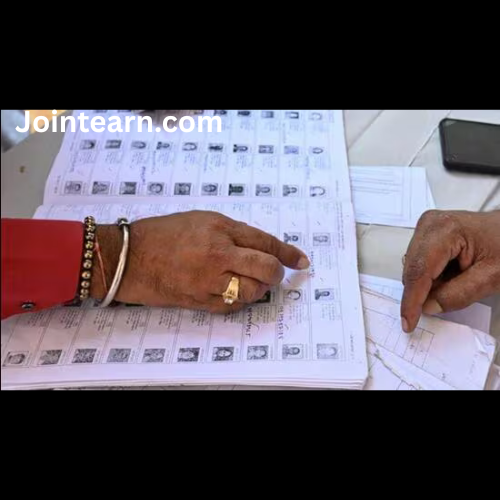The 2025 Bihar Assembly elections delivered one of the most sweeping mandates the state has witnessed in recent years, with the National Democratic Alliance (NDA)—comprising the Bharatiya Janata Party (BJP), Janata Dal (United), Lok Janshakti Party (Ram Vilas), and Hindustani Awam Morcha (Secular)—firmly positioning itself for a commanding return to power. As per the Election Commission’s trends updated at 8:30 pm on November 14, the NDA was poised to secure more than 200 of the 243 assembly seats, placing it far beyond the majority mark and cementing a decisive electoral victory.
This election cycle offered a blend of predictable outcomes, staunch incumbents maintaining their strongholds, sharpened rivalry within the Opposition ranks, and unexpected upsets that shaped the final picture. The day-long counting process offered constant twists, with fluctuating leads and frequent constituency-level surprises that kept both voters and political observers glued to the numbers.
By 7:30 pm, the NDA had already secured 111 seats, with projections signaling a sizable addition from constituencies where its candidates were leading. The BJP emerged as the largest single party in this election, with 64 wins and leads in 26 constituencies. It marked a significant consolidation of the party’s electoral base across urban, semi-urban, and rural pockets of Bihar. Meanwhile, the JD(U), under the leadership of Chief Minister Nitish Kumar, secured 47 wins and maintained leads in 37 additional constituencies. Despite pre-election speculation about a decline in his influence, Nitish Kumar and his party displayed a robust recovery from their 2020 performance, significantly improving their strike rate in these elections.
The smaller yet strategically important allies of the NDA delivered notable performances as well. The Lok Janshakti Party (Ram Vilas), despite internal reorganizations in previous years, secured 11 seats and showed promising leads in eight more. The Hindustani Awam Morcha (Secular) emerged victorious in two seats and led in three others, signaling its continued relevance in specific caste and region-based pockets.
The Opposition INDIA bloc, comprising the Rashtriya Janata Dal (RJD), Congress, and Left parties, managed moderate gains but fell far short of mounting a strong challenge to the NDA. By 7:30 pm, the bloc had won at least 16 seats. The RJD secured 14 wins and was leading in 11 constituencies, while the Congress won one seat and led in five others. The Left parties made minor inroads, with CPI(ML) Liberation and CPI(M) winning one seat each, and CPI(ML) rising as the lead contender in one additional constituency. Although these numbers reflected pockets of influence for the Opposition, they were insufficient to counter the NDA’s sweeping mandate.
Prominent leaders from the NDA retained their positions with comfortable margins, reasserting their political stature. Bihar Deputy Chief Minister Samrat Choudhary secured the Tarapur seat, reinforcing his increasing prominence within the state unit of the BJP. Similarly, ministers such as Prem Kumar, Maheshwar Hazari, and Sanjay Saraogi emerged victorious, continuing their strong electoral presence. Prem Kumar’s continued dominance in Gaya Town, which he has held since 1990, remained one of the remarkable stories of the election. He defeated his Congress rival, Akhouri Onkar Nath, by a victory margin exceeding 26,000 votes, reaffirming his status as one of Bihar’s longest-serving and most consistent legislators.
Among the notable outcomes was the re-election of RJD leader Tejashwi Yadav from the Raghopur constituency. The former Deputy Chief Minister maintained his stronghold, even as his party faced considerable challenges across the state. In stark contrast, his brother and Janshakti Janata Dal (JJD) chief, Tej Pratap Yadav, faced defeat in Mahua, signaling a major personal setback for him and a symbolic loss for the family’s long-standing political legacy.
Another high-profile contest came in the Chapra constituency, where RJD’s star candidate, Bhojpuri actor-turned-politician Khesari Lal Yadav (Shatrughan Yadav), faced defeat at the hands of BJP’s Chhoti Kumari. The result underscored the mixed fortunes of celebrity candidates in this electoral cycle, where local leadership and grassroots appeal outweighed star power. Meanwhile, in Alinagar, BJP’s decision to field singer Maithili Thakur paid off handsomely, as she clinched victory in her debut election, making her one of the most talked-about newcomers of this cycle.
One of the most striking outcomes involved Anant Singh, the JD(U) candidate from Mokama, who won his seat despite being incarcerated during the campaign. Singh’s arrest in connection with the killing of a Jan Suraaj Party supporter did not deter his local support base, reflecting the complex interplay of loyalty, identity, and influence in certain constituencies.
The full list of winners across the state presented a broad spectrum of experienced leaders, new entrants, grassroots organizers, and surprise performers. Victories spanned across parties such as the AIMIM in seats like Kochadhaman, Amour, Baisi, and Jokihat; the RLM in Madhubani and Dinara; and multiple constituencies captured by the LJPRV, particularly in regions where caste dynamics aligned favorably for them. The list extended to numerous BJP and JD(U) constituencies across districts like Patna, Darbhanga, Gaya, Muzaffarpur, and beyond, highlighting the NDA’s dominance across diverse geographic and demographic categories.
With the NDA firmly on track to form the next government, the political narrative in Bihar is expected to focus on governance continuity, development promises, and internal balancing of power within the alliance. While speculation prior to the polls suggested that the BJP might push for its own Chief Minister in the next five years, Nitish Kumar’s strengthened performance may delay or complicate such plans. For now, his popularity, particularly among extremely backward classes and women voters, remains a decisive factor in the coalition’s victory.
The 2025 Bihar elections, therefore, encapsulate a remarkable interplay of traditional loyalties, governance records, caste considerations, and localized campaign efforts. With major leaders retaining their influence and several unexpected victors making headlines, the results reflect both continuity and change within the state’s political landscape. The counting day reaffirmed that Bihar’s electoral horizon remains dynamic and unpredictable, shaped by both longstanding political equations and emerging voter sentiments.


Leave a Reply